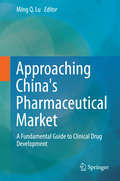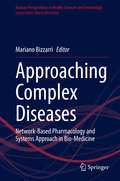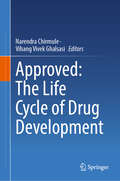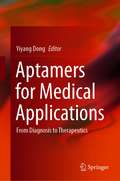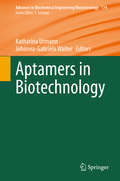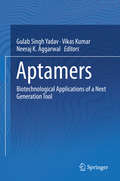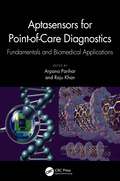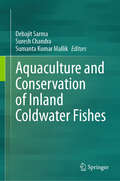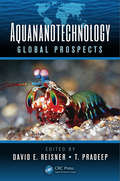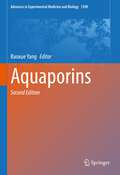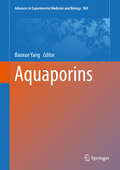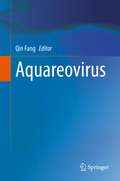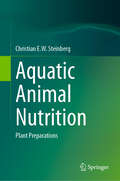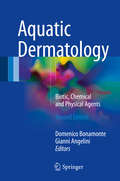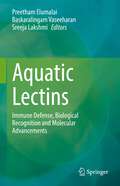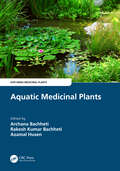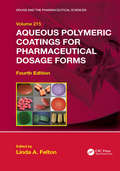- Table View
- List View
Approaches to Universal Health Coverage and Occupational Health and Safety for the Informal Workforce in Developing Countries: Workshop Summary
by Engineering Medicine National Academies of SciencesUniversal health coverage (UHC) has been recognized by the World Health Organization as a key element in reducing social inequality and a critical component of sustainable development and poverty reduction. In most of the world UHC is sought through a combination of public and private-sector health care systems. In most low- and middle-income countries health systems are evolving to increasingly rely on the private sector because the public sector lacks the infrastructure and staff to meet all health care needs. With growing individual assets available for private-sector expenditure, patients often seek better access to technology, staff, and medicines. However, in low-income countries nearly 50 percent of health care financing is out-of-pocket. With the expected increase in the overall fraction of care provided through the private sector, these expenditures can be financially catastrophic for individuals in the informal workforce. In the global workforce of approximately 3 billion people, only 10 to 15 percent are estimated to have some type of access to occupational health services. The informal workforce is growing worldwide, and the degree to which its occupational health needs are satisfied depends on the capabilities of the general health care system. In July 2014, the Institute of Medicine held a workshop on approaches to universal health coverage and occupational health and safety for informal sector workers in developing countries. This report summarizes the presentations and discussions from this workshop. Approaches to Universal Health Coverage and Occupational Health and Safety for the Informal Workforce in Developing Countries identifies best practices and lessons learned for the informal workforce in developing countries in the financing of health care with respect to health care delivery models that are especially suitable to meeting a population's needs for a variety of occupational health issues, including the prevention of or mitigation of hazardous risks and the costs of providing medical and rehabilitation services and other benefits to various types of workers within this population. These experiences and lessons learned may be useful for stakeholders in moving the discussions, policies, and mechanisms forward to increase equitable access to quality health services without financial hardship for the informal workforce.
Approaches to the Conformational Analysis of Biopharmaceuticals (Protein Science)
by Roger L. LundbladThe activity of many biopharmaceutical polymers is dependent on conformation, and the next several years will see increased interest in the conformational analysis of these polymers resulting from the development of biosimilar or "follow-on" biological products. While a wide variety of approaches to analysis exists, finding the most viable ones wou
Approaching China's Pharmaceutical Market: A Fundamental Guide to Clinical Drug Development
by Ming Q. LuThis authoritative volume examines the major laws, regulations and guidelines related to pharmaceutical product development in China. With a focus on patent, clinical and registration strategies, the book helps Western companies introduce their clinical drugs to the Chinese market, determine a strategic path and bridge the gap for regulatory and legal differences between China and the Western world. For a better understanding of the drug registration process, it explores the differences between the China Food and Drug Administration (CFDA)--including its regulations and registration procedures--and those of the Western world. The volume discusses disparities between China's application requirements compared to Western standards to make it easier for companies to prepare their application packages. It also provides detailed commentary on CFDA guidelines in reference to clinical trial (IND) and market application (NDA) requirements. Overall, this book offers guidance for Western companies aspiring to expand into China's pharmaceutical market in hopes that they may gain a fundamental understanding of its rules and complexities in order to ensure a smooth transition and prevent future issues.
Approaching Complex Diseases: Network-Based Pharmacology and Systems Approach in Bio-Medicine (Human Perspectives in Health Sciences and Technology #2)
by Mariano BizzarriThis volume – for pharmacologists, systems biologists, philosophers and historians of medicine – points to investigate new avenues in pharmacology research, by providing a full assessment of the premises underlying a radical shift in the pharmacology paradigm. The pharmaceutical industry is currently facing unparalleled challenges in developing innovative drugs. While drug-developing scientists in the 1990s mostly welcomed the transformation into a target-based approach, two decades of experience shows that this model is failing to boost both drug discovery and efficiency. Selected targets were often not druggable and with poor disease linkage, leading to either high toxicity or poor efficacy. Therefore, a profound rethinking of the current paradigm is needed. Advances in systems biology are revealing a phenotypic robustness and a network structure that strongly suggest that exquisitely selective compounds, compared with multitarget drugs, may exhibit lower than desired clinical efficacy. This appreciation of the role of polypharmacology has significant implications for tackling the two major sources of attrition in drug development, efficacy and toxicity. Integrating network biology and polypharmacology holds the promise of expanding the current opportunity space for druggable targets.
Approaching Death: IMPROVING CARE AT THE END OF LIFE
by Committee on Care at the End of LifeWhen the end of life makes its inevitable appearance, people should be able to expect reliable, humane, and effective caregiving. Yet too many dying people suffer unnecessarily. While an "overtreated" dying is feared, untreated pain or emotional abandonment are equally frightening.Approaching Death reflects a wide-ranging effort to understand what we know about care at the end of life, what we have yet to learn, and what we know but do not adequately apply. It seeks to build understanding of what constitutes good care for the dying and offers recommendations to decisionmakers that address specific barriers to achieving good care.This volume offers a profile of when, where, and how Americans die. It examines the dimensions of caring at the end of life: Determining diagnosis and prognosis and communicating these to patient and family. Establishing clinical and personal goals. Matching physical, psychological, spiritual, and practical care strategies to the patient's values and circumstances. Approaching Death considers the dying experience in hospitals, nursing homes, and other settings and the role of interdisciplinary teams and managed care. It offers perspectives on quality measurement and improvement, the role of practice guidelines, cost concerns, and legal issues such as assisted suicide. The book proposes how health professionals can become better prepared to care well for those who are dying and to understand that these are not patients for whom "nothing can be done."
Appropriate Use of Advanced Technologies for Radiation Therapy and Surgery in Oncology: Workshop Summary
by Engineering Medicine National Academies of SciencesIn recent years, the field of oncology has witnessed a number of technological advances, including more precise radiation therapy and minimally invasive surgical techniques. Three-dimensional (3D), stereotactic, and proton-beam radiation therapy, as well as laparoscopy and robotic surgery, can enhance clinician's ability to treat conditions that were clinically challenging with conventional technologies, and may improve clinical outcomes or reduce treatment-related problems for some patients. Both patients and physicians seek access to these new technologies, which are rapidly being adopted into standard clinical practice. Such demand is often propelled by marketing that portrays the new technologies as the “latest and greatest” treatments available. However, evidence is often lacking to support these claims, and these novel technologies usually come with higher price tags and are often used to treat patients who might have achieved similar benefits from less expensive, conventional treatment. The increased cost of novel treatments without adequate assessment of how they affect patient outcomes is a pressing concern given that inappropriate use of expensive technologies is one of the key factors that threaten the affordability of cancer care in the United States. To explore these issues further, the National Cancer Policy Forum (NCPF) of the Institute of Medicine organized a workshop in July 2015. This is the third NCPF workshop in a series examining the affordability of cancer care. Participants explored clinical benefits and comparative effectiveness of emerging advanced technologies for cancer treatment in radiation therapy and surgery and potential strategies to assess the value and promote optimal use of new technologies in cancer treatment. This report summarizes the presentations and discussions from the workshop.
Approved: The Life Cycle of Drug Development
by Narendra Chirmule Vihang Vivek GhalsasiDrug development stands at a transformative threshold in modern medicine. Over the past three decades, biotherapeutics have redefined medical innovation, paving the way for treatments that are not only effective but also accessible. This book provides a comprehensive exploration of the intricate world of drug development, shedding light on the essential balance between efficiency, regulatory compliance, and quality to achieve both innovation and affordability. Written by leading experts, this guide delves into the multi-faceted process of drug development, covering critical areas such as pharmacology, biomarkers, toxicology, product development, manufacturing, and clinical trials—all framed within the stringent requirements set by the FDA. Readers will find in-depth discussions on the latest technologies, statistical approaches, and quality assurance measures essential to navigating today’s complex regulatory landscape. With practical case studies, project reports, and curated article reviews, this book offers valuable insights into risk assessment and mitigation at every stage of development. It serves as an indispensable resource for students, educators, and industry professionals, aiming to foster a deeper understanding of the challenges and opportunities in drug development and to inspire the next generation of scientific innovators.
Approximate Quantum Markov Chains (SpringerBriefs In Mathematical Physics #28)
by David SutterThis book is an introduction to quantum Markov chains and explains how this concept is connected to the question of how well a lost quantum mechanical system can be recovered from a correlated subsystem. To achieve this goal, we strengthen the data-processing inequality such that it reveals a statement about the reconstruction of lost information. <P><P> The main difficulty in order to understand the behavior of quantum Markov chains arises from the fact that quantum mechanical operators do not commute in general. As a result we start by explaining two techniques of how to deal with non-commuting matrices: the spectral pinching method and complex interpolation theory. Once the reader is familiar with these techniques a novel inequality is presented that extends the celebrated Golden-Thompson inequality to arbitrarily many matrices. This inequality is the key ingredient in understanding approximate quantum Markov chains and it answers a question from matrix analysis that was open since 1973, i.e., if Lieb's triple matrix inequality can be extended to more than three matrices. Finally, we carefully discuss the properties of approximate quantum Markov chains and their implications.<P> The book is aimed to graduate students who want to learn about approximate quantum Markov chains as well as more experienced scientists who want to enter this field. Mathematical majority is necessary, but no prior knowledge of quantum mechanics is required.
Aprender a amar(me)
by Camila Zuluaga"El amor propio nos enseña que el dolor no es una opción" CAMI ZULUAGA, influenciadora colombiana, tuvo un episodio depresivo muy fuerte y descubrió que también sufre de codependencia, un trastorno que la hace tener relaciones tóxicas. En este inspirador libro nos cuenta su proceso de rehabilitación, y con ejercicios, consejos y actividades, nos comparte las herramientas que la ayudaron a salir adelante. Aprender a amar(me) nos va a enseñar a tener relaciones amorosas y saludables, empezando por la más importante: la que tenemos con nosotros mismos
Aptamers for Medical Applications: From Diagnosis to Therapeutics
by Yiyang DongThis book outlines comprehensively the main medical uses of aptamers, from diagnosis to therapeutics in fourteen chapters. Pioneering topics covered include aptamer pharmaceuticals, aptamers for malign tumors, aptamers for personalized therapeutics and aptamers for point-of-care testing. The book offers an essential guide for medical scientists interested in developing aptamer-based schemes for better theranostics. It is therefore of interest for not only academic researchers, but also practitioners and medical researchers in various fields of medical science, medical research and bio-analytical chemistry.
Aptamers in Biotechnology (Advances in Biochemical Engineering/Biotechnology #174)
by Johanna-Gabriela Walter Katharina UrmannThis book reviews the development, characterization and applications of aptamers in different areas of biotechnology ranging from therapeutics to diagnostics and protein purification. Hailed as chemical antibodies, these single-stranded nucleic acid receptors were predicted to supersede antibodies in traditional assays, such as ELISA, within a short time. While this has yet to happen, readers will find in this book a deep insight into the progress of aptamer technology and a critical discussion about the limitations that need to be overcome in order to find wider acceptance and use outside of the still relatively small aptamer-community. This book covers all aspects of aptamer generation and application for the aptamer-experienced reader and curious novice alike, with the addition of an industry perspective on the future of aptamer-use in biotechnology.
Aptamers: Biotechnological Applications of a Next Generation Tool
by Vikas Kumar Gulab Singh Yadav Neeraj K. AggarwalThe book discusses the basics of aptamers and the advent of aptamer-based technology in recent times. The book covers the diverse applications of aptamers, such as in detection of animal and plant pathogens, disease diagnosis and therapeutics, environmental contamination detection etc. Besides these applications, the book also describes the use of these synthetic or modified DNA, as drug delivery vehicles.The different chapters describe how the binding capacity and specificity of aptamers can be exploited in various ways. The book also discusses how these attributes of aptamers can outdo the antibody technology in biomedical and diagnostic solutions. This crisp and concise book gives the readers an insight into the most recent biotechnological applications of aptamers.
Aptasensors for Point-of-Care Diagnostics: Fundamentals and Biomedical Applications
by Arpana PariharThe design and fabrication of aptamer-based biosensors for point-of-care testing of disease diagnostic and prognostic is an upthrust and interdisciplinary area of research. This book covers the design and development of novel cost-effective aptamer-based biosensors for disease diagnostic and prognostic including an understanding of health care management in terms of timely updates of disease situations in a particular geographical area. It also discusses the scaling up and market trend of aptamer-based devices for extension of research from lab to market, and end users. Features: Explains the design and fabrication of aptasensors-based diagnostic devices. Includes novel approaches and comprehensive technology overview for diagnosis management towards early-stage detection of various biomarkers associated with several health conditions. Demonstrates possible benefits of combined diagnostics and therapeutic possibilities using aptamer-based point-of-care technologies devices. Discusses emerging implications and recent advances of biosensing platforms for designing and developing aptamer-based point-of-care testing (POCT) devices. Explores aptamer-based approach to develop advanced platforms for medical applications and open arena for state-of-the-art future research. This book is aimed at researchers and graduate students in biomedical engineering, diagnostics, nanobiotechnology, and materials science.
Aquaculture and Conservation of Inland Coldwater Fishes
by Suresh Chandra Debajit Sarma Sumanta Kumar MallikThis book provides the latest information on trans-Himalayan Hindu Kush Region (HKR) fisheries including the Indian Himalayan Region (IHR) as well as the historical context of its sustainable development for improving livelihood and nutritional security. The book serves as an important document to provide knowledge and information about the major concerns of environmental and anthropogenic factors that have impacted the population of certain important fishes in the ecosystem and the strategies and policies required for the conservation of these important groups of fishes, viz., Mahseer, snow trout, minor carp, catfishes, etc. The chapters describe the information to the readers on potential cold water and cool water fish species suitable for large-scale farming and propagation addressing the issues of diseases, nutrigenomics, and nanobiotechnology. This book also addresses the prospects and potential of recreational fishing in India and the scope for its improvement to generate more employment and income citing the success stories and primary information from reputed anglers. Finally, the book also elucidates a comprehensive yet representative description of many challenges associated with inland coldwater- cool water fisheries and aquaculture in HKR, IHR, and its way forward.
Aquananotechnology: Global Prospects
by T. Pradeep David E. ReisnerThe world's fresh water supplies are dwindling rapidly-even wastewater is now considered an asset. By 2025, most of the world's population will be facing serious water stresses and shortages. Aquananotechnology: Global Prospects breaks new ground with its informative and innovative introduction of the application of nanotechnology to the remediatio
Aquaporins (Advances in Experimental Medicine and Biology #1398)
by Baoxue YangThis book provides a state-of-the-art report on our current understanding of aquaporins and the future direction of the field. Aquaporins (AQPs) are a group of water-channel proteins that are specifically permeable to water and other small molecules, such as glycerol and urea. To date thirteen water-channel proteins (AQP0 – AQP12) have been cloned and the mechanisms and physiological functions of water transport across biological membranes have long been the subject of interest. Recent advances in the molecular biology and physiology of water transport have yielded new insights into how and why water moves across cell membranes, and studies on aquaporin knockout mouse models suggest that aquaporins are involved in the development of some diseases and they may be useful targets of research into selective-inhibitor drugs. By focusing on the advances made over the last 30 years in the biophysics, genetics, protein structure, molecular biology, physiology, pathophysiology and pharmacology of aquaporins in mammalian cell membranes, this book provides novel insights into further mechanisms and the physiological significance of water and some small molecule transport in mammals in order to stimulate further research in new directions.In the second version, fourteen chapters will be updated base on the most recent research articles. Ten new chapters will be added.
Aquaporins (Advances in Experimental Medicine and Biology #969)
by Baoxue YangThis book provides a state-of-the-art report on our current understanding of aquaporins and the future direction of the field. Aquaporins (AQPs) are a group of water-channel proteins that are specifically permeable to water and other small molecules, such as glycerol and urea. To date thirteen water-channel proteins (AQP0 - AQP12) have been cloned and the mechanisms and physiological functions of water transport across biological membranes have long been the subject of interest. Recent advances in the molecular biology and physiology of water transport have yielded new insights into how and why water moves across cell membranes, and studies on aquaporin knockout mouse models suggest that aquaporins are involved in the development of some diseases and they may be useful targets of research into selective-inhibitor drugs. By focusing on the advances made over the last 20 years in the biophysics, genetics, protein structure, molecular biology, physiology, pathophysiology and pharmacology of aquaporins in mammalian cell membranes, this book provides novel insights into further mechanisms and the physiological significance of water and some small molecule transport in mammals in order to stimulate further research in new directions.
Aquaporins in Health and Disease: New Molecular Targets for Drug Discovery
by Angela Casini Graça Soveral S0ren NielsenSince the discovery of Aquaporin-1 (AQP1) as a water channel, many studies have revealed the importance of aquaporins in mammalian physiology and pathophysiology as well as plant and microbial biology. The studies have also shown aquaporins as potential drug targets and targets for improving crop properties.Written by an international group of contributors at the forefront of the field, Aquaporins in Health and Disease: New Molecular Targets for Drug Discovery presents the latest research advances in aquaporins and other major intrinsic protein (MIP) channels. The first section of the book describes the general concepts of aquaporin channel function, genomic research, structure-function analysis of aquaporins and glycerol facilitators, and regulation by gating and trafficking, including yeast aquaporin regulation and function. The second section discusses the physiological and pathophysiological roles of aquaporins in humans and microbes. The final section covers the development of inhibitors of aquaporin function. The book’s epilogue offers future perspectives and directions, mainly in the area of aquaporin-based diagnostics and therapeutics.Stimulating future research on this important protein family, this book facilitates a paradigm shift in the understanding and roles of aquaporin membrane proteins in all biological settings. It encourages scientists to develop novel approaches for the treatment of human diseases based on aquaporin function or dysfunction.
Aquareovirus
by Qin FangAquareoviruses cause infection in bony fish and shellfish and thus, constitute a significant threat to aquaculture industries worldwide. Aquareoviruses, belonging to the family Reoviridae, have genomes consisting of 11 segments of double-stranded RNA contained within a core (T = 1) surrounded by a double-layered icosahedral capsid with a T = 13 symmetry in general. These viruses not only physically resemble mammalian orthoreoviruses, but also show the highest amino acid identity. More than hundred aquareoviruses have been isolated from both saline water and freshwater origins; however, literary sources elucidating aquareovirus biology are very limited. Given the increasing pace of discovery, it is imperative to make a clear, systematic filing of key aspects of aquareoviruses. Therefore, the aim of writing this book is to provide insights into the molecular mechanisms of evolution, pathogenesis, and host response in aquareovirus infection. This book offers a state-of-the-art report on recent discoveries concerning the aquareovirus genome evolution, gene encoded protein functions, and pathogenesis by comparison with its sister genus Orthoreovirus, including avian and mammalian reoviruses. It mainly focuses on advances made over the past 30 years in research on the general and molecular biology, protein structure and function, infection and replication, epidemiology and diagnosis, immunological prevention and medical treatment, and host antiviral immunity against aquareovirus infection. This book will help curious graduate students or interested researchers acquire an overall picture of aquareovirus infection and pathogenesis, as well as yield benefits in fisheries to better prevent and control diseases caused by aquareovirus infection.
Aquatic Animal Nutrition: Plant Preparations
by Christian E.W. SteinbergThis volume first covers the supplementation of aquafeeds with terrestrial plant material used in human medicine and nutrition. Mainly based on the “trial and error” approach, many supplements enhance growth, immunity and resistance to stress. However, other supplements appear to be ineffective and some have adverse effects. A robust and guiding hypothesis for supplementation is not apparent. Therefore, the book proposes the use of artificial intelligence to end the trial-and-error phase. In addition, a graded dosing is rarely used, especially in the low-dose range, so the physiological mechanisms behind the supplements are often only partially understood. This topic of aquatic animal nutrition is still in its infancy. Chapters cover medicinal plants in general, selected medicinal plants in detail, food plants, fruits, essential oils, fermentation residues, and genetically modified plants. One chapter attempts to answer the question of what mechanism may underlie ineffective or even harmful supplementation. Overall, the importance of the intestinal microflora is becoming increasingly clear and points to the imperative need to include gut microbiota in replacement studies. Based on the few epigenetic studies currently available, the importance of these processes is demonstrated. The need to integrate such approaches into future studies is emphasized. The so-called hologenomics approach is inevitable. Can adverse effects be mitigated by adding functional feed ingredients such as prebiotics or probiotics? This volume concludes with aquatic plants (macroalgae, filamentous algae, and macrophytes) as food sources for natural and farmed aquatic animals. Can aquaculture learn from natural aquatic herbivores?
Aquatic Dermatology: Biotic, Chemical and Physical Agents
by Domenico Bonamonte Gianni AngeliniThis well-illustrated quick reference book, now in its second edition, is a comprehensive guide to the aquatic skin diseases caused by biotic and non-biotic noxae. It will assist the dermatologist in recognizing and treating a host of unfamiliar conditions that are nevertheless steadily increasing in prevalence owing to wider use of the hydrosphere for holiday, sport, and occupational activities throughout the year. Beyond the thorough examination of the dermatoses caused by a wide range of organisms such as jellyfish, sea anemones, echinoderms, molluscs, algae, aquatic worms, and fish, attention is drawn to potential systemic reactions, which can be serious or even fatal. In addition, the entire spectrum of wound infections and reactions due to microscopic organisms populating the aquatic environment, e. g. , mycobacteria, streptococci, Aeromonas, and vibrios, is considered. Finally, detailed attention is paid to the many other conditions linked to salt or freshwater contact, including aquagenic urticaria and pruritus, chlorine irritation, contact dermatitis from swimming or diving equipment, surfer's nodules, and chemical conjunctivitis. Aquatic Dermatology will be a quick reference to improve knowledge of the aquatic environment and its risks, and a useful tool to clinicians and professionals practicing in coastal and marine areas.
Aquatic Ecosystems and Microbial Biofilms: Significance, Dynamics, Prevention and Control
by Ram Prasad Siddhardha BusiAquatic Ecosystems and Microbial Biofilms: Significance, Dynamics, Prevention and Control provides a systematic introduction and review of state-of-the-art information on microbial biofilms in aquatic ecosystems and their control. The book is designed and developed to understand the microbial biofilms in aquatic ecosystems, their role, and the control strategies. The contents of the book are well discussed to get state-of-art knowledge on various topics such as the role of biofilms in marine ecosystems, microbial biofilms, and drinking water systems, biofilms in biofouling and biocorrosion, beneficial aspects of biofilms such as biogeochemical cycling, wastewater treatment, and in biodeterioration of organic materials. This book also provides comprehensive knowledge and in-depth scientific information on the role of biofilms and their contribution to antibiotic resistance, and also advanced technologies to understand biofilms such as metagenomics.The book offers comprehensive coverage of the most essential topics, including: Microbial biofilms in aquatic ecosystems. New horizons to understand the role of biofilms in biofouling and corrosion and their control measures. Beneficial role of aquatic biofilms such as in biogeochemical cycling,wastewater treatment, and biodeterioration of organic materials. Various strategies to collaborate interdisciplinary schemes worldwide to design and develop new methods for cleaner drinking water, and information on advanced techniques such as metagenomics to understand the diversity and functional role of aquatic biofilms. This book serves as a reference book for scientific investigators who would like to study biofilms in aquatic ecosystems, as well as researchers developing methodology in this field to study biofilm formation in aquatic ecosystems, their advantages and disadvantages, and control strategies.
Aquatic Lectins: Immune Defense, Biological Recognition and Molecular Advancements
by Preetham Elumalai Sreeja Lakshmi Baskaralingam VaseeharanThis book provides the latest information on fish lectins from the perspective of inflammation and presents new ideas on the complicated mechanisms of lectin biochemistry and associated interactions. Key features include discussion of mechanisms recently identified to be involving lectin family types, presentation of the latest evidence regarding the molecular approaches in fish lectins, and thorough explanation of the concept of antimicrobial and immunological roles and current understanding of the significance of its disease resistance related studies. Gene expression studies is another important element of the book, and it is proposed that gene editing technology provides gaining attention in the biological role of fish lectin research. Examples of the many lastest molecular approaches, applications and future perspectives in fish lectin specific topics covered in this book include the information right from the basics to the advancements in this area. The book will be a valuable update and resource for both experienced and younger researchers working in the field of lectins and immunology.
Aquatic Medicinal Plants (Exploring Medicinal Plants)
by Azamal Husen Rakesh Kumar Bachheti Archana BachhetiThe use of medicinal plants in herbal and modern medicine has gained popularity over the last few decades due to consumers taking more natural approaches to medicine. Aquatic medicinal plants are rich in bioactive compounds and demonstrate various commercial, nutraceutical, and biological applications. Aquatic Medicinal Plants offers the reader a wealth of information on uses of bioactive components of these plants, along with crucial references, and explains their traditional uses, phytochemistry, and pharmacological properties.Features Provides information on aquatic and semiaquatic medicinal plants and their uses globally. Discusses phytochemical components with the known active constituents and their pharmaceutical applications. This volume in the Exploring Medicinal Plants series is appropriate for scientists, experts, and consultants associated with the exploration of aquatic medicinal plant usage. This book is an essential tool for identifying important aquatic medicinal plants and possibilities for the synthesis or preparation of modern drugs.
Aqueous Polymeric Coatings for Pharmaceutical Dosage Forms (Drugs and the Pharmaceutical Sciences)
by Linda A. FeltonAqueous-based film coating has become routine in the pharmaceutical industry. This process eliminates the use of organic solvents and thus avoids economic, environmental, and toxicological issues related to residual solvents and solvent recovery. Aqueous-based coating, however, is complex and many variables may impact the final product and its performance. This fourth edition of Aqueous Polymeric Coatings for Pharmaceutical Dosage Forms aims to provide insight into the factors and parameters that should be considered and controlled for the successful development and commercialization of a coated product. The fourth edition has been revised and expanded to reflect the most recent scientific advancements from the literature. The contributing authors explain in detail, using illustrated examples, appropriate steps to solve and ideally avoid formulation, processing, and stability problems and to achieve an optimized dosage form. Trade names and chemical names of commercially marketed coatings are used throughout the text to help familiarize the reader with the various materials available for pharmaceutical applications. This book will be a valuable resource for anyone in the pharmaceutical industry working in the area of aqueous-based film coating.


